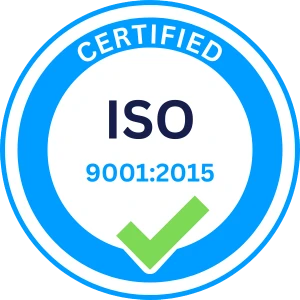In the vast landscape of educational institutions, understanding where your college or university stands can be challenging. That’s where NIRF (National Institutional Ranking Framework) comes into play, providing a much-needed benchmark to assess the performance and quality of educational institutions in India.
In this extensive guide, we’ll delve into the intricacies of NIRF rankings, what they’re based on, and why they matter.
What is NIRF?
NIRF, or the National Institutional Ranking Framework, is an initiative by the Indian government to evaluate and rank higher education institutions in the country. Established in 2015 by the Ministry of Education, NIRF aims to provide students and parents with credible and reliable information on the quality of institutions.
NIRF operates within a comprehensive framework that comprises several key components:
Objectives of NIRF:
NIRF rankings serve multiple objectives, including aiding students in their decision-making process, promoting quality in higher education, and fostering innovation and competitiveness among institutions.
Framework Structure:
The NIRF framework is structured around various parameters and sub-parameters, each contributing to the final rankings.
Parameters Evaluated by NIRF:
NIRF assesses institutions based on a set of well-defined parameters:
- Teaching, Learning, and Resources (TLR): This parameter emphasizes the core activities of an institution and their contribution to the teaching and learning process.
- Research and Professional Practices (RP): NIRF evaluates an institution’s research and professional practices, encouraging institutions to excel in these areas.
- Graduation Outcomes (GO): This parameter emphasizes an institution’s ability to deliver valuable educational outcomes, including graduation rates and post-degree outcomes.
- Outreach and Inclusivity (OI): NIRF promotes outreach to various segments and communities and ensures inclusivity in all institutional activities.
- Perception (PR): The parameter of perception evaluates an institution’s public perception, an important aspect influencing the overall NIRF ranking.
What is the NIRF Ranking?
NIRF ranking, the core outcome of this framework, is a numerical ranking assigned to higher education institutions based on a set of predetermined criteria. This ranking system helps students and other stakeholders make informed decisions about selecting an institution for their academic pursuits.
Ranking Methodology:
NIRF employs a robust methodology to evaluate and rank institutions, ensuring transparency and fairness in the process.
NIRF Rankings Categories:
NIRF provides rankings for various categories, including overall institutions, universities, engineering institutions, management institutions, pharmacy institutions, and architecture institutions.
What is NIRF Ranking Based On?
NIRF rankings are founded on an array of performance indicators that meticulously assess an institution’s overall quality. These indicators encompass aspects like teaching, research, outreach, and more, all of which contribute to an institution’s holistic development.
Performance Indicators: NIRF employs a multitude of performance indicators across categories, each contributing to an institution’s final ranking.
Teaching and Learning: This section evaluates an institution’s core teaching and learning activities, considering metrics like student strength, faculty-student ratio, and financial resources.
Research and Professional Practices: Research output, innovative practices, and collaborative projects play a crucial role in this indicator.
Graduation Outcomes: NIRF considers aspects like graduation rates, employability, and the quality of graduates produced by an institution.
Outreach and Inclusivity: Inclusivity, diversity, and outreach to underserved communities are vital parameters within this indicator.
Perception: Public perception and peer opinions contribute to an institution’s ranking, reflecting its reputation and standing in the academic community.
Importance of NIRF Ranking
Understanding the significance of NIRF ranking is essential. A favorable ranking can significantly impact an institution’s reputation, attracting high-caliber students, faculty, and research opportunities. It also fosters healthy competition among institutions, encouraging continuous improvement in education quality.
Impact on Institution’s Reputation: NIRF ranking positively influences an institution’s reputation, which, in turn, attracts students, faculty, and research opportunities.
Attracting High-Caliber Students: A higher NIRF ranking can lead to increased applications from top-tier students, thereby enhancing the overall quality of the student body.
Healthy Competition: NIRF rankings foster competition among institutions, driving them to continuously improve their educational quality and standards.
Why Does NIRF Ranking Matter for Educational Institutes?
In the competitive world of higher education, NIRF ranking matters for several reasons. It helps institutions stand out in the crowd, secure funding, collaborate with top organizations, and, most importantly, create an environment that fosters holistic development in students.
Enhancing Reputation: A higher NIRF ranking significantly enhances an institution’s reputation in the education sector and beyond.
Attracting Funding: Institutions with favorable rankings often find it easier to secure financial support and funding opportunities.
Research Collaborations: Higher-ranked institutions tend to attract more research collaborations and partnerships with organizations.
Student Quality: NIRF ranking directly influences the quality of students an institution can attract, contributing to overall excellence.
International Recognition: A strong NIRF ranking can lead to international recognition and collaborations, providing students with global opportunities.
What Are the Criteria for NIRF Ranking?
NIRF rankings are not based on whims; they follow a well-defined set of criteria. These criteria span categories like Teaching, Learning and Resources, Research and Professional Practice, Graduation Outcomes, Outreach and inclusivity, and Perception. Each of these categories carries a specific weightage, and institutions are evaluated accordingly.
Teaching, Learning & Resources (TLR): This category focuses on the core activities of teaching and learning, including resources available for students.
Research and Professional Practice (RP): The RP category evaluates research output and professional practices within the institution.
Graduation Outcomes (GO): Graduation Outcomes assess the quality of graduates an institution produces and their employability.
Outreach & Inclusivity (OI): OI evaluates how well an institution reaches out to underserved communities and ensures inclusivity.
Perception (PR): This category assesses an institution’s reputation and perception in the academic community.
How QualCampus Helps Your Institute's NIRF Ranking
Now, you might be wondering how to enhance your institution’s NIRF ranking. This is where QualCampus comes into the picture. Our all-in-one ERP and LMS solutions are designed to streamline various administrative, academic, and student-centric functions within educational institutions. From managing academic planning to facilitating comprehensive assessment and evaluation, our software helps you improve every aspect that NIRF rankings consider.
Academic Planning: QualCampus provides advanced academic planning tools, ensuring that your institution’s educational programs align with NIRF’s standards for teaching and learning.
Assessment and Evaluation: Our software simplifies the process of assessment and evaluation, helping your institution maintain high graduation outcomes.
Financial Management: Financial management is a crucial aspect of NIRF rankings. QualCampus offers financial tools to ensure optimal resource allocation.
Faculty, Management, and Student Portals: We provide portals for stakeholders, enhancing communication, transparency, and efficiency.
Integration with Standard APIs: QualCampus seamlessly integrates with standard APIs, ensuring your institution stays at the forefront of technology.
Reporting and Analytics: In-depth reporting and analytics tools help you track and improve every aspect that NIRF evaluates.
The Road to a Better NIRF Ranking
In this NIRF ranking guide, we’ve navigated the intricacies of this essential framework, giving you a deeper understanding of its importance and impact. To improve your institution’s NIRF ranking, invest in the right tools, like QualCampus, and focus on continuous improvement across all evaluated categories.
Here are more articles that may get your attention
Conclusion:
NIRF rankings are not just numbers; they are a testament to an institution’s commitment to quality education. As an educational institution, understanding the intricacies of NIRF rankings and working towards improving your ranking can go a long way in fostering growth and development.
So, embark on the journey towards a better NIRF ranking with the right knowledge and tools at your disposal.
To know about QualCampus Education ERP, LMS & CRM
Where can you find the Best ERP, LMS & CRM in the Market?
When it comes to finding ERP, LMS & CRM, you have several options available. While many ERP providers offer’s them, but QualSoft stands out as one of the leading brands renowned for providing exceptional ERP, LMS & CRM solutions. Our comprehensive range of offerings includes features such as Fees Management, Customer Relationship Management, Admission Management, Exam Management, Learning Management, Student Training & Placement Management, Online Class Management System, and a Cloud Based Student Information Systems (SIS) top-notch .
If you’re considering implementing or upgrading your existing ERP system in your educational institution, whether it’s a University, College, School, or group of institutions, look no further than QualCampus. With our cutting-edge ERP, CRM & LMS solutions, you can streamline your administrative processes, enhance collaboration, and provide a seamless learning experience for your students. QualCampus is your ultimate one-stop solution for all your ERP, CRM & LMS needs in the education sector.








